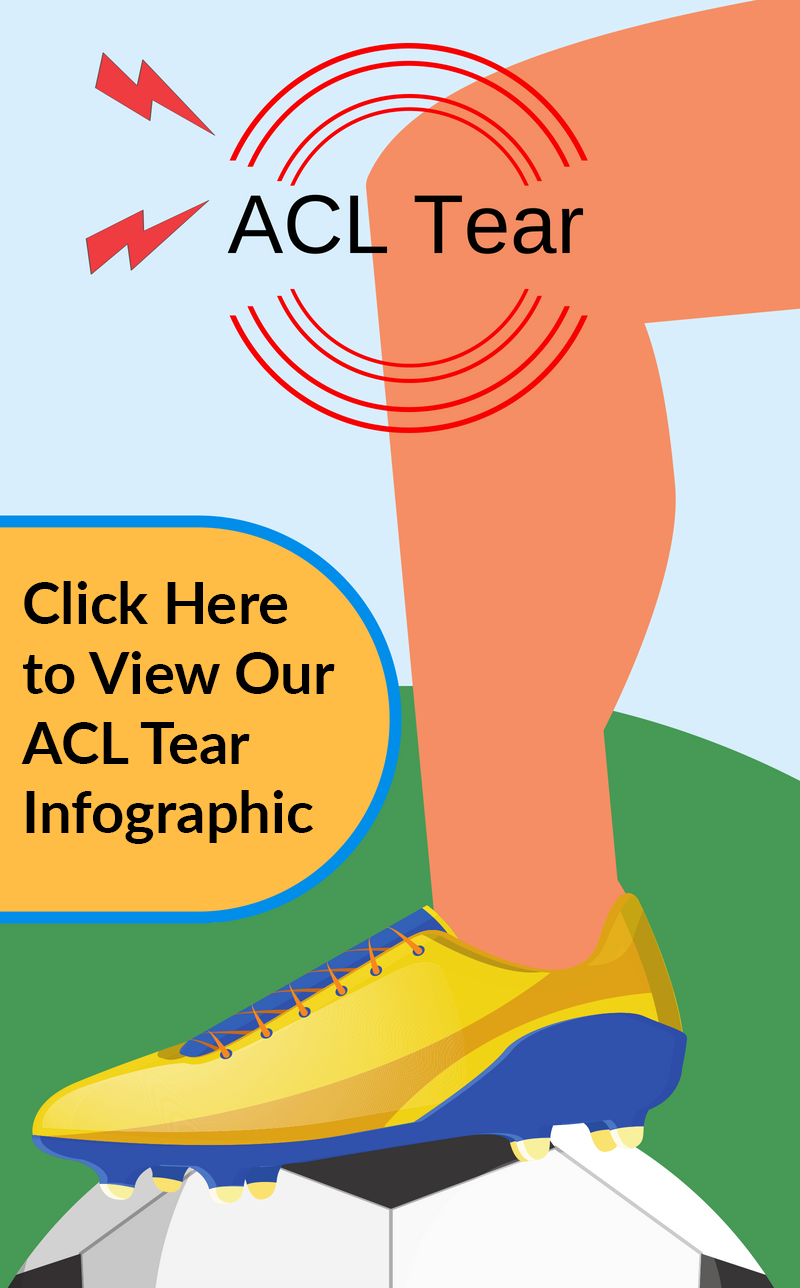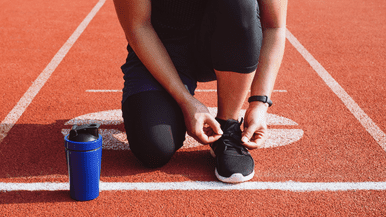 An anterior cruciate ligament (ACL) tear or sprain is a common knee injury suffered by athletes. Roughly 150,000 ACL injuries occur every year in the United States. Athletes that play certain high-demand sports are among the most likely to suffer an ACL tear, and female athletes who play basketball and soccer can be up to eight times more likely to injure their ACL than males.
An anterior cruciate ligament (ACL) tear or sprain is a common knee injury suffered by athletes. Roughly 150,000 ACL injuries occur every year in the United States. Athletes that play certain high-demand sports are among the most likely to suffer an ACL tear, and female athletes who play basketball and soccer can be up to eight times more likely to injure their ACL than males.
The ACL is one of the most important ligaments in the knee; it helps keep the tibia from coming forward or twisting. The ACL is critical for cutting in sports like football, soccer, basketball or tennis.”
An ACL injury occurs from an irregular knee movement or when the knee is locked, and there’s a sudden pivot in a new direction. The injury can also happen when a direct blow drives the knee into an abnormal and painful position. Symptoms of an ACL injury may include:
- A loud popping sound
- Severe discomfort
- Being unable to resume the activity
- Knee inflammation that gradually deteriorates
- Pain when walking or an inability to place weight on the distressed leg
What to Expect from ACL Tear Treatment
Surgery is generally required for an ACL to heal completely, although nonsurgical treatments like bracing and physical therapy can be considered for older patients with less active lifestyles.
During ACL reconstructive surgery, an orthopaedic surgeon replaces the torn ligament with a tendon by making small incisions over the front of the kneecap. The tendon that replaces the ACL acts as a graft. The surgeon then makes small incisions on the side of the knee and uses a tiny fiber-optic camera to guide the ACL into place. Once the procedure is complete, special screws are used to secure the ends of the graft to the thigh and lower leg bones.
The procedure is typically done arthroscopically in an outpatient setting with the recovery usually lasting about six to nine months.
Progressive physical therapy after ACL repair surgery helps to strengthen the muscles around the knee and improve flexibility. A licensed physical therapist is a crucial member of any post-surgical rehabilitation team teaching patients the best exercises needed for proper healing and rehabilitation.
At Advanced Orthopaedic Centers, a physical therapist devises an individualized treatment program for each patient’s specific needs and goals. Treatment programs may include:
- Bracing
- Movement, strengthening, and balance exercises
- Electrical stimulation
- Slowly returning to sporting or other activities
Beyond physical therapy, an orthopaedic surgeon will likely recommend the “RICE” treatment regimen to help reduce pain and swelling at home.
- Rest. Rest as much as necessary, using crutches and limiting the weight on the injured knee for as long as your physician advises.
- Ice. Patients should ice the knee for twenty minutes every couple of hours while at home.
- Compression. Patients should use elastic bandages or compression wraps around the knee.
- Elevation. Patients are recommended to prop the knee up on a bolster or cushion.
Closely following the recommendations of both an orthopaedic surgeon and physical therapist ensure patients get back on their feet and back to their routines faster. ACL surgical repair patients generally have good outcomes and can typically get back to their normal activities within six to nine months.





